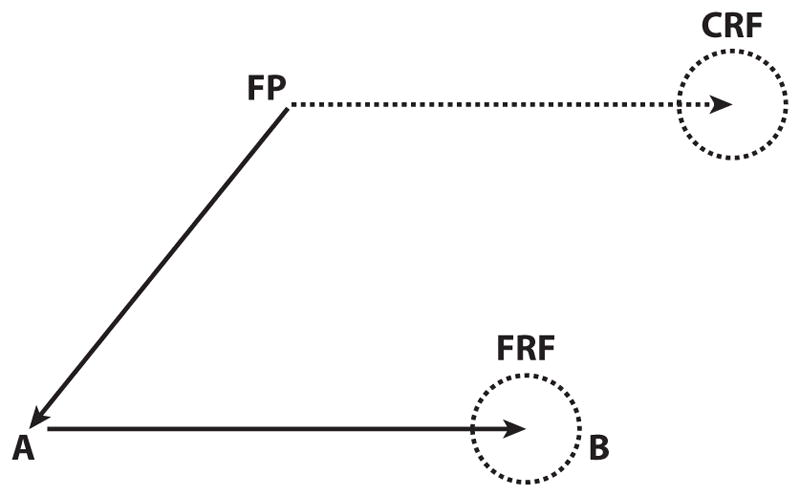Figure 4.

How remapping solves the double-step task. In the double-step task, the subject looks at a fixation point (FP), and stimuli flash sequentially at spatial locations A and B and disappear before the subject makes the first saccade FP to A. When the B stimulus appears, it is not in the stable-fixation receptive field of the A to B neuron, which occupies the spatial location CRF (current receptive field). Instead, it lies in the spatial location that the stable-fixation receptive field will occupy after the saccade from FP to A, the FRF (future receptive field). When the monkey plans the saccade from FP to A, the remapping mechanism causes the neuron to respond to the B target. This creates a peak on the LIP priority map that can drive the saccade from A to B even though the B stimulus never appeared in the neuron’s stable-fixation receptive field.
